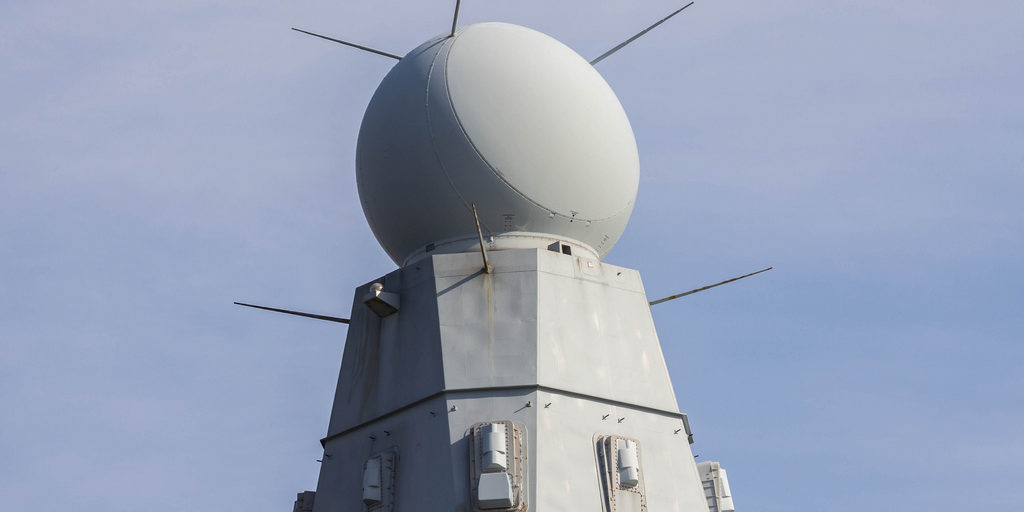Quick Facts
| Role and Mobility | Long and medium-range search, surface picture search, high-speed horizon search, high-angle search and track, multiple target tracking and multiple channel fire control, Road-mobile |
| Frequency | S-Band |
| Range | 400 km |
| Air Defense Interceptor Systems | Sea Viper Naval Air Defense System |
| Targets | Sea-skimming missiles, Stealth missiles, Ballistic missiles |
| Status/Exports | Operational/None |
| Producer | BAE Systems Maritime |
Overview
The SAMPSON radar is a multi-function dual-faced active electronically scanned array radar derived from the Multi-function Electronically Scanned Adaptive Radar (MESAR) program.[i] The SAMPSON multi-function radar can detect various types of targets out to a distance of 400 km, and it is capable of tracking hundreds of targets simultaneously. The Sea Viper Naval Air Defense system uses the SAMPSON radar to detect, assess, and command target priorities as well as calculate the best launch time for the interceptors. The SAMPSON’s ability to maneuver its beam allows multiple functions to be carried out simultaneously, combining surveillance and tracking into a single system.[ii] Because of its extended range, the SAMPSON radar can provide long-range detection capabilities with a lower false alarm rate, while employing electronic countermeasures to prevent jamming.[iii]
Strategic Implications
Strategically, its active array software shapes and directs the radar beam to carry out functions, making it practically immune from enemy jamming. This function would be especially valuable in areas near to a country’s enemy. However, unlike the active array radars employed by the United States, which use multiple arrays to provide continuous coverage, the SAMPSON only uses two planar arrays that rotate rapidly. Due to the arrays’ rapid rotation, no part of the sky lacks coverage for more than half a second on average. This type of set-up also decreases expenses associated with the radar, allowing a country to utilize extra resources elsewhere.[iv]
Timeline
July 2014: The SAMPSON radar begins new trials to test its ability to spot ballistic missile threats.[v]
March 2007: Physical installation of the first production radar on HMS Daring began.
August 2005: Development and production engineering problems led to a rescheduling of deliveries.
September 2004: The first prototype SAMPSON Multi-Function Radar was installed on a representative Type 45 foremast.[vi]
December 2003: A follow contract for five more production SAMPSON radars for Type 45 destroyers was awarded to BAE Systems.
October 2000: The original full-scale engineering contract was awarded and required the deliver of three pre-production standard prototype radars for test and reference purposes by 2004.[vii]
Recent News
References
[i] http://www.defense-aerospace.com/articles-view/release/3/1380/bae-reconfigures-sampson-naval-radar-%28jan.10%29.html
[ii] https://tessella.com/case-studies/sampson-radar-tracking-algorithms/
[iii] https://web.archive.org/web/20070819200935/http://navy-matters.beedall.com/sampson.htm
[iv] https://www.baesystems.com/en/sampson-multi-function-radar
[v] https://www.naval-technology.com/features/featuresampson-radar-uk-pursues-at-sea-missile-defence-capabilities-4323886/
[vi] https://web.archive.org/web/20070819200935/http://navy-matters.beedall.com/sampson.htm
[vii] Ibid.

